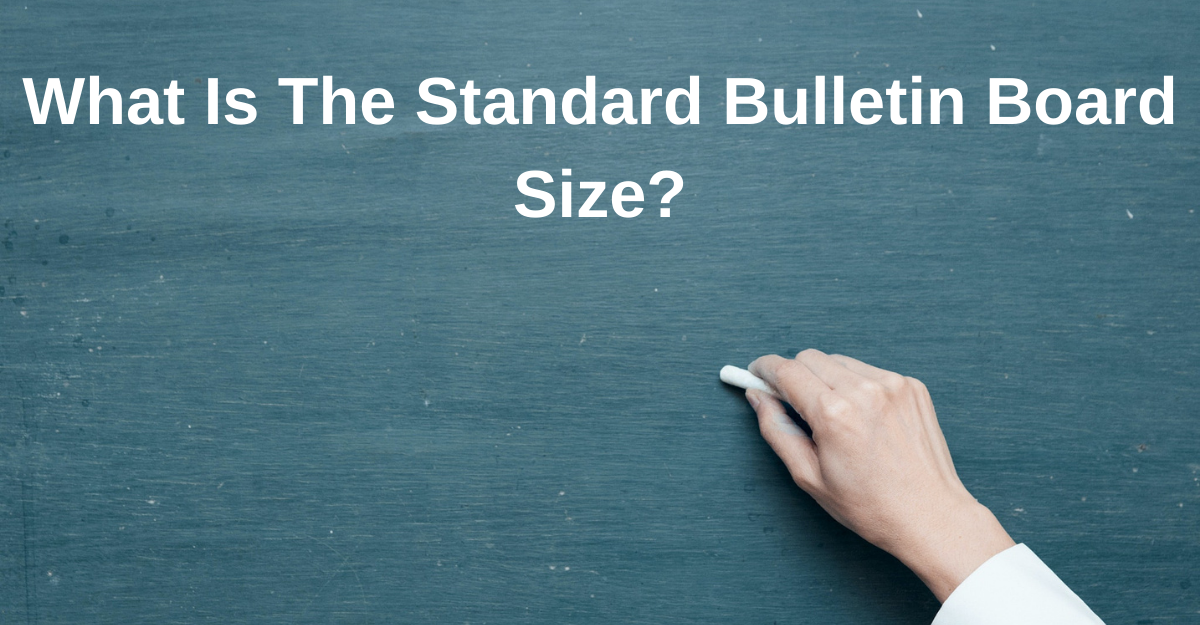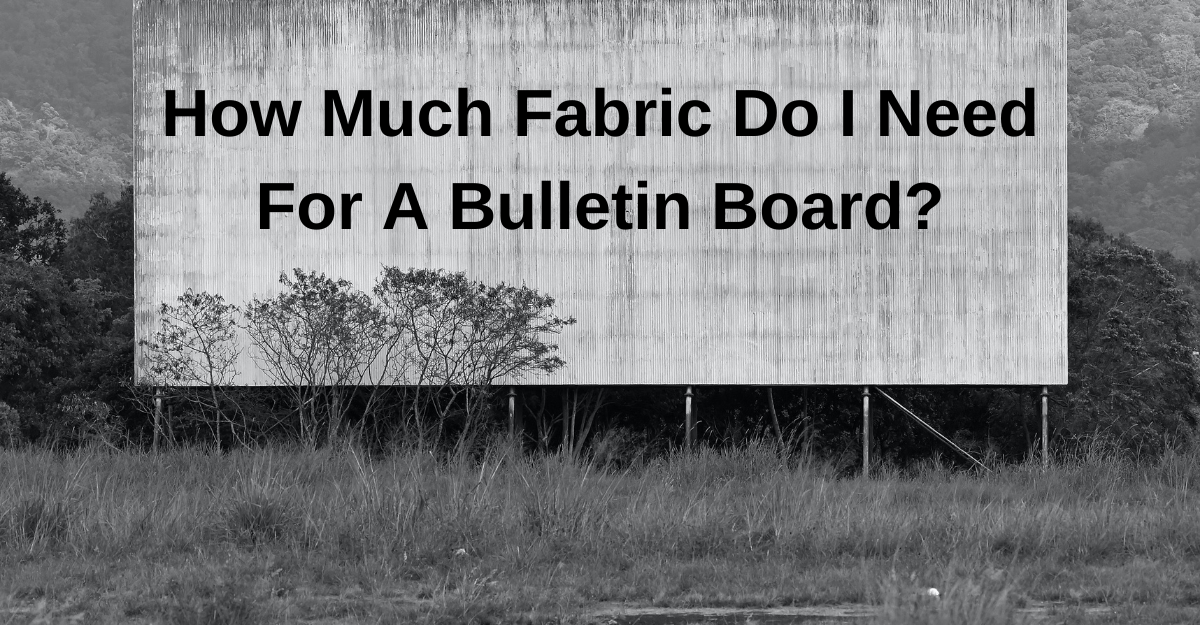
Standard Bulletin Board Size or Dimension
Bulletin boards come in various sizes to accommodate different display needs and available spaces. The term “bulletin board sizes” refers to the dimensions of these boards, which can vary widely. The standard bulletin board size, however, often falls within the range of 24 inches by 36 inches to 48 inches by 72 inches. This range of standard bulletin board size is commonly seen in offices, schools, and community spaces, as it offers a good balance between visibility and available space for posting notices, announcements, and other important information.
For smaller spaces or more specific purposes, smaller bulletin board sizes are also available, such as 18 inches by 24 inches or even 12 inches by 18 inches. These compact bulletin boards are ideal for displaying concise information, like daily schedules, short memos, or task lists. On the other hand, larger bulletin board sizes, such as 48 inches by 96 inches, are often chosen when there’s a need to display a substantial amount of content, such as event calendars, organizational charts, or collaborative project updates.
How big is a large bulletin board?
The dimensions of large bulletin boards can vary depending on the specific context and requirements. When considering bulletin board sizes, a “large” bulletin board refers to those with dimensions that exceed the standard bulletin board size dimensions commonly seen in offices and schools. While there isn’t a universally fixed measurement for a large bulletin board, they often fall within the range of 48 inches by 72 inches and above.
Large bulletin board sizes are often chosen for high-traffic areas or spaces where a substantial amount of information needs to be displayed. These larger boards can measure anywhere from 48 inches by 72 inches to even 96 inches by 120 inches or more. The extra space provided by such bulletin board sizes allows for the presentation of extensive content, such as event schedules, project timelines, or intricate organizational charts.
What does a standard-size cork board look like?
A standard-size cork board, often referred to as a bulletin board, comes in various dimensions to suit different communication needs and available spaces. These bulletin board sizes range from 24 inches by 36 inches to 36 inches by 48 inches. A standard-size cork board is a versatile option commonly found in homes, offices, and classrooms. It provides ample space for posting notices, memos, photographs, and other important information.
The dimensions of bulletin board sizes can play a significant role in determining their utility. A standard-size cork board, with its dimensions falling within the aforementioned range, strikes a balance between visibility and available wall space. This makes it suitable for personal use at home or in small office settings, where the goal is to organize and display essential information in a compact yet effective manner.
What does a traditional bulletin board consist of?
A traditional bulletin board is a classic means of displaying information, announcements, and notices in various settings. These bulletin boards, available in different sizes, are made of materials like cork, fabric, or foam and are mounted on walls or other suitable surfaces. The term “bulletin board sizes” refers to the dimensions of these boards, which can range from small to large, accommodating different communication needs and available spaces.
The design of traditional bulletin boards is straightforward and functional. They consist of a durable backing material covered by a layer of cork or fabric where items like paper notices, flyers, and memos can be pinned or attached using push pins or thumbtacks. The availability of different bulletin board sizes ensures that they can be customized to fit specific environments and preferences.
What is the required amount of fabric for a bulletin board?

Standard Bulletin Board Size or Dimension
The amount of fabric you need for a bulletin board depends on the dimensions of the board itself and how you plan to cover it. Standard bulletin board size can vary widely, from small ones suitable for personal use to larger ones commonly found in classrooms or offices. The fabric you’ll need is influenced by the board’s size and the method you use to wrap or cover it.
When determining the fabric needed for a bulletin board, start by measuring the dimensions of the board. For instance, if you have a standard bulletin board size that is 24 inches by 36 inches, you need to account for the surface area of the front and sides that you intend to cover. This would involve measuring the width, height, and thickness of the board to calculate the amount of fabric required. Standard bulletin board size often refer to the actual display area, so be sure to measure the dimensions accurately.
FAQs
What Size Are Bulletin Boards In Inches?
Standard bulletin board size are often measured in inches and can vary widely depending on their intended use and the available space. Common bulletin board sizes range from small to large, catering to different communication needs and environments.
Smaller bulletin board sizes, such as 18 inches by 24 inches or 12 inches by 18 inches, are suitable for personal use, small offices, or compact spaces. These Standard bulletin board size provide enough room to display concise information, reminders, or daily schedules. They are convenient for individual organization and communication needs.
How do you design a bulletin board?
Designing a bulletin board involves a thoughtful approach to utilizing the available space effectively while conveying information in an engaging and organized manner. Whether you’re working with small or large bulletin board sizes, the following steps can guide you through the design process.
- Define Your Purpose and Audience: Determine the purpose of the bulletin board – is it for sharing announcements, displaying student work, promoting events, or providing information? Consider the audience that will be viewing the bulletin board and tailor the content accordingly.
- Select the Right Bulletin Board Size: Choose a standard bulletin board size that suits the available space and the amount of information you want to display. Ensure that the standard bulletin board size is appropriate for the area where it will be placed while allowing for easy visibility and readability.
- Plan the Layout: Sketch a rough layout of the bulletin board, considering the placement of different elements. Decide where headers, images, text, and other materials will go. Pay attention to visual hierarchy – important information should be prominent and easily accessible.
- Gather Materials: Collect the materials you’ll need for the bulletin board design. This includes printed announcements, images, borders, headers, and any decorative elements you plan to use. Ensure that the materials are cohesive and aligned with the theme or purpose of the bulletin board.
- Create Visual Balance: Arrange the elements on the bulletin board in a balanced way. Avoid overcrowding or leaving too much empty space. Use standard bulletin board size to your advantage, allowing enough room for each element to be clearly seen without overwhelming the viewer.
- Use Colors Wisely: Choose a color scheme that complements the content and captures attention. Use colors to highlight important information, create visual interest, and maintain consistency. Be mindful of color contrast to ensure readability.
- Utilize Headers and Borders: Headers and borders can help organize the content and provide structure to the bulletin board. Use headers to introduce sections and titles, and borders to frame important information or create a cohesive look.
- Incorporate Visuals: Incorporate visuals such as images, illustrations, or charts to make the bulletin board visually appealing. Visuals can help convey messages quickly and engage the viewer. Ensure that images are clear and relevant to the content.
- Include Text: Use concise and clear text to convey information. Break down content into digestible sections with short paragraphs, bullet points, or headings. Choose fonts that are easy to read from a distance and maintain consistency in font styles.
- Add Interactive or 3D Elements: Depending on the purpose of the bulletin board, consider adding interactive elements like QR codes, tear-off tabs, or pockets for additional handouts. These elements can enhance engagement and provide additional information.
- Regular Maintenance: Keep the bulletin board updated and well-maintained. Replace outdated content, refresh visuals, and ensure that the information remains relevant and accurate.
- Seek Feedback: Before finalizing the design, seek feedback from colleagues, peers, or students. Their input can provide valuable insights and help you make any necessary improvements.







You must be logged in to post a comment.